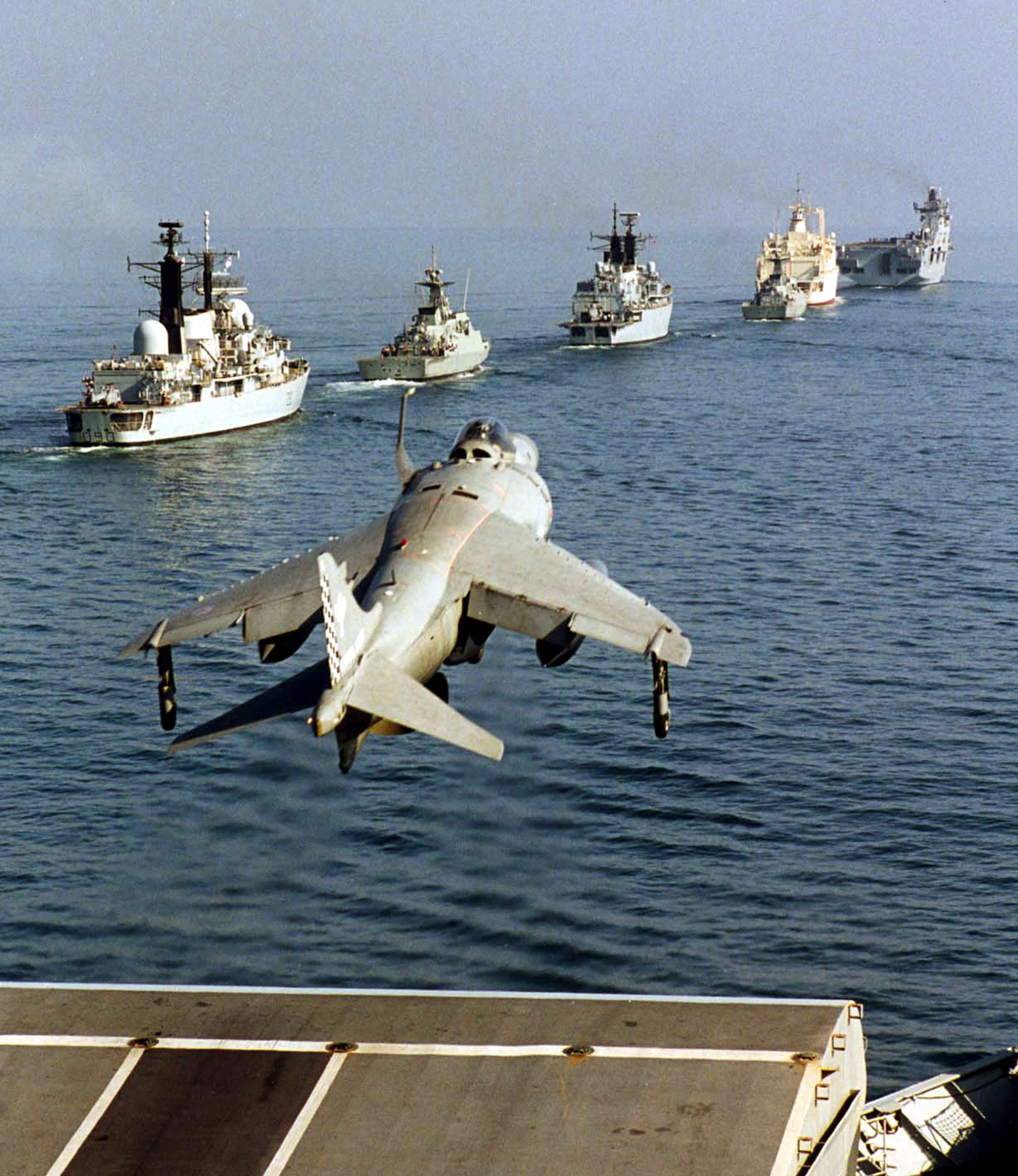Stories of tricky maneuvers and dangerous landings performed by pilots are many in the history of aviation. One such maneuver, or rather, a misadventure was reported in the North Atlantic Ocean towards the end of the Cold War.
Russia Uses ‘Israeli-Origin’ Attack Drones To Strike Ukraine, Counter Bayraktar TB-2 UAVs Employed By Kiev
In June of 1983, the British aircraft carrier HMS Illustrious, which was recently decommissioned after 32 years of service, was participating in a NATO exercise. The drill was taking place off the coast of Portugal.
Sub-Lieutenant Ian “Soapy” Watson, then a young 25 year old, was preparing for his 14th sortie in the Sea Harrier vertical take-off and landing (VTOL) fighter jet. A senior pilot in another Harrier jet paired up with Watson who was ordered to find a French aircraft carrier.
The two departed under radio silence and their radars switched off in order to simulate combat conditions.
The pilots split up upon reaching their particular search areas and ascended up towards their designated altitude. Following this, the aircraft’s radars were turned on, and they searched different zones.

After completing his assignment, Watson descended to a lower altitude and flew to the area where he was supposed to meet up with the senior pilot. However, the other aircraft did not arrive.
Watson realized that he would have to make his way back to the Illustrious alone. So he turned on his radar and radio and used every instrument available to him to navigate back. Yet, the young pilot received absolutely no signals in return.
“I went through everything I had in the airplane to help me,” Watson is quoted as saying by the Smithsonian Magazine. “I tried the radio. I had the radar on. I squawked emergency. Absolutely nothing. There were no returns on the radar.”
And then, his aircraft began to start running low on fuel. This was worrying.
A Dangerous Maneuver
Watson turned the Harrier eastwards, where he knew there was a shipping lane. He soon spotted a Spanish container ship, the Alraigo, on his radar. It was 50 miles away, and the then sub-lieutenant, owing to the depleting fuel, only had a few minutes of flight time left.
He decided to fly towards the vessel and made visual contact from 12 miles away. Watson’s plan was to eject after ensuring that the crew onboard the ship saw him.
To grab the crew’s attention, he did a close fly-by. During this, he noticed that the containers essentially formed a platform that was large enough for him to try to land on.
“Well, I thought, in for a penny, in for a pound, and I landed the airplane on the containers,” Watson recalled.
Thus, his Sea Harrier ZA 176 perched on the Alraigo’s containers. However, when Watson’s attempts to retract the landing gear to stop the slide failed, the jet started slipping backward.
It slipped off the container and onto the roof of a van, which was parked on deck. The van propped up the fuselage and prevented the aircraft from sliding further. And then, there was a different challenge.
How A Young Pilot Landed In Trouble
The Alraigo’s captain refused to go off-schedule for the unexpected visitor atop his ship. Upon his direction, the British government was informed that the fighter aircraft and Watson would arrive in Tenerife, where the ship was headed, in four days’ time.
The Alraigo docked at Santa Cruz de Tenerife amid much media fanfare at its scheduled time. The ship’s crew and owners filed a salvage claim and were awarded close to £570,000 as compensation for the “rescue.”
Watson, on the other hand, was set for a tough time. He faced a formal inquiry on board the Illustrious when he returned there. This Board of Inquiry did effectively nothing about the matter. He also underwent a second Board of Inquiry after the carrier ship returned to port. No reports were released despite media inquiries.
The second report was finally made public in 2007 when Britain’s National Archives released a number of Royal Navy files. The board noted that Watson had completed only 75 percent of his training before being sent to sea.
They blamed Watson’s inexperience, as well as his commanders for assigning him an airplane that was “not fully prepared for the sortie.” This was likely a reference to the warplane’s radio problems. The young pilot was reprimanded and given a desk job.
He eventually did manage to acquire 2,000 hours in Sea Harriers and 900 hours in F/A-18s before resigning in 1996. In a rare interview, he said that media attention embarrassed the Royal Navy brass and caused the punishment. However, Watson refused to take names, and instead said that “it was me[…]I was there and that’s where it should stop.”
- Contact the author at: shreyya.mundhra@gmail.com
- Follow EurAsian Times on Google News